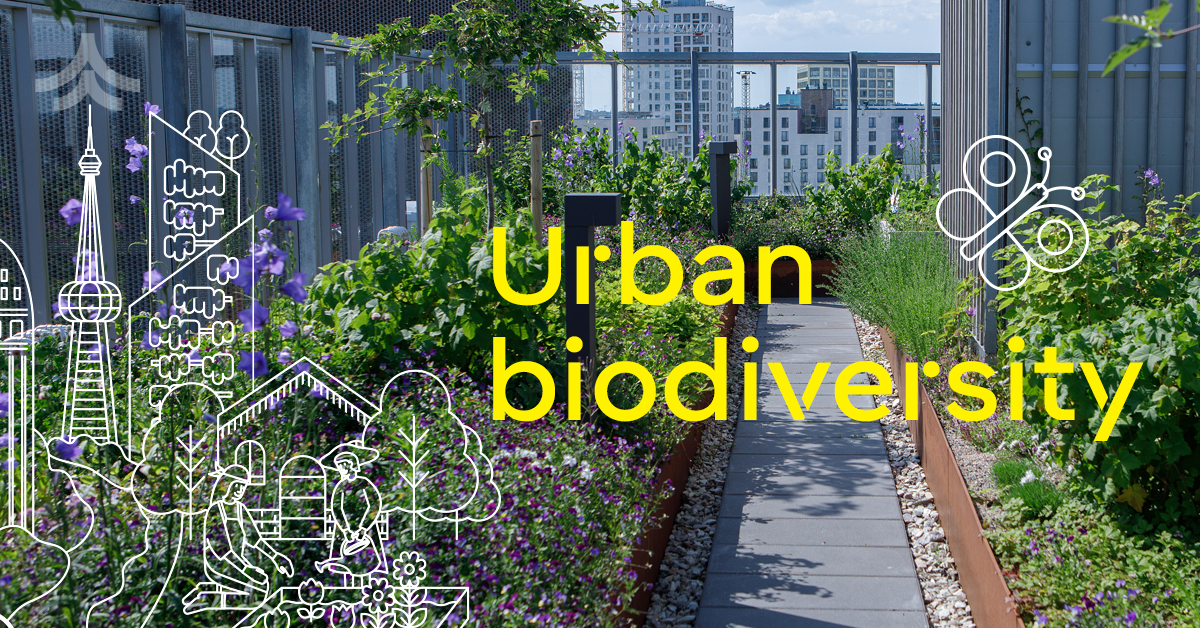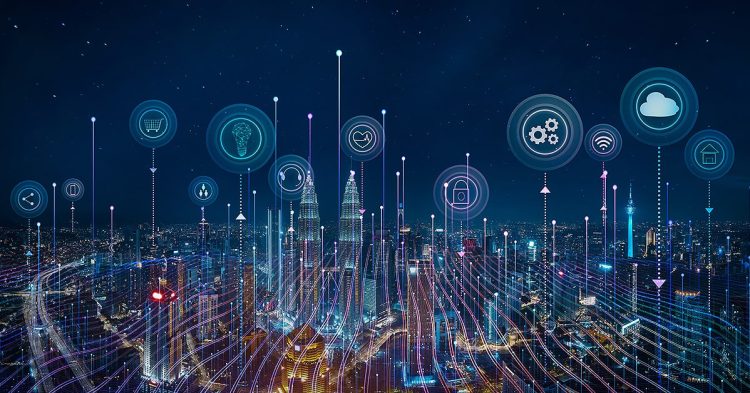As the global population surges and urbanization accelerates, the concept of sustainable cities has become a vital focus for architects, urban planners, and technologists alike. Sustainability is no longer just an option but a necessity in building the cities of the future. The integration of the latest technology offers promising solutions to tackle urban challenges like overcrowding, energy consumption, pollution, and resource depletion. But how feasible is it to build truly sustainable cities with today’s tech? Can technology truly reshape the urban landscape for a more sustainable future?
This article explores how emerging technologies are helping cities become more sustainable and whether the dream of green, efficient, and livable urban centers is achievable. From renewable energy systems and smart infrastructure to circular economies and vertical farming, let’s dive into how we can leverage technology to create cities that thrive in harmony with the planet.
The Challenges of Urbanization
Urbanization has reached unprecedented levels in recent decades. More than 55% of the world’s population now lives in cities, a figure that is expected to rise to 70% by 2050. This rapid growth presents a multitude of challenges, including:
- Overcrowding and Housing Shortages: Cities are expanding at a pace that outstrips the development of housing, leading to congestion, homelessness, and the rise of informal settlements.
- Resource Depletion: As cities grow, so does their demand for energy, water, and other resources, which strains the environment and creates sustainability challenges.
- Pollution: Air quality, water pollution, and waste management are critical issues, contributing to environmental degradation and health concerns.
- Transportation: Cities often face congestion, inefficiency, and high carbon emissions due to outdated infrastructure and a reliance on fossil fuel-based transportation.
While these problems may seem daunting, technological innovation offers potential solutions that could help overcome these urbanization challenges and set the foundation for more sustainable cities.
Smart Cities: The Intersection of Technology and Sustainability
The idea of “smart cities” refers to urban areas that use advanced technologies to enhance the quality of life for residents while reducing environmental impact. A smart city is built upon integrated technologies such as Internet of Things (IoT) devices, artificial intelligence (AI), and big data analytics. These technologies create a feedback loop where real-time data from sensors and connected systems help cities optimize resources and improve efficiency.

1. Smart Infrastructure and IoT
The backbone of any smart city is its infrastructure. By incorporating IoT into infrastructure elements like roads, bridges, and energy grids, cities can gather real-time data to optimize everything from traffic flow to energy usage. Sensors embedded in infrastructure can monitor air quality, detect water leaks, and even alert authorities to potential problems before they become crises.
For example, in Barcelona, Spain, IoT devices are used to monitor and manage street lighting, waste management, and traffic systems. This not only enhances the efficiency of services but also reduces energy consumption, waste production, and emissions.
2. Renewable Energy Systems
Renewable energy technologies, such as solar, wind, and geothermal, are vital to creating sustainable urban environments. Solar panels and wind turbines can provide cities with clean energy, reducing reliance on fossil fuels and lowering carbon emissions.
In cities like Masdar City in the UAE, solar energy is harnessed to power the entire city. Wind and solar are not only part of the energy mix but are integrated into the very design of the city’s infrastructure. Such models can serve as blueprints for other cities looking to transition to renewable energy sources.
Additionally, smart grids powered by AI allow cities to better manage and distribute renewable energy. These grids can adjust the energy supply in real-time based on demand and weather conditions, ensuring that the energy system remains efficient and adaptable.
The Role of AI and Big Data in Urban Sustainability
Artificial Intelligence (AI) and big data are revolutionizing the way cities operate, enabling them to become more sustainable, efficient, and resilient.
1. AI for Optimized Resource Management
AI-powered systems can help cities monitor and optimize the use of resources like water, energy, and waste. For instance, AI algorithms can predict peak energy demand times and adjust energy distribution accordingly. In waste management, AI can analyze trash collection data to optimize routes, reducing fuel consumption and emissions.
In Singapore, AI is already being used to optimize the management of water. By analyzing data from sensors placed throughout the city, AI can predict water shortages, detect leaks, and improve water usage efficiency. These data-driven systems not only save money but also contribute to water conservation, which is vital in urban areas.
2. Big Data for Urban Planning
Big data allows cities to plan and build more intelligently. By analyzing vast amounts of information collected from citizens, businesses, and urban infrastructure, city planners can make informed decisions about where to build new infrastructure, how to reduce congestion, and where to deploy public services.
In cities like New York and London, big data is used to track traffic patterns and adjust public transportation routes in real-time, reducing congestion and improving air quality. This data-driven approach can help optimize everything from land use to energy efficiency.
Circular Economy: Reimagining Urban Systems
A circular economy aims to create a closed-loop system where resources are continually reused, reducing waste and minimizing environmental impact. This model contrasts with the traditional linear economy, where resources are extracted, used, and then discarded.
1. Recycling and Waste Management
Advances in recycling technologies and waste management are helping cities adopt circular economy principles. Automated sorting systems powered by AI can now sort recyclable materials with higher accuracy, ensuring that valuable resources like metals, plastics, and paper are reused efficiently. Cities like Tokyo and San Francisco have pioneered waste management systems that prioritize recycling and composting, significantly reducing landfill waste.
2. Sustainable Construction Materials
In sustainable cities, construction practices also play a critical role in resource conservation. Instead of using conventional, resource-intensive materials like concrete and steel, cities are turning to alternative materials such as bamboo, recycled plastics, and even 3D-printed buildings. For example, the Netherlands has been using recycled plastic to create durable, sustainable roadways, while 3D printing technologies have been used to create entire homes with minimal waste.
3. Urban Farming: Growing Food Locally
Urban farming is another example of how a circular economy can work in practice. As cities face food security issues and supply chain disruptions, growing food locally in vertical farms or on rooftops is becoming increasingly popular. By using technology to create controlled environments, these farms can yield a large amount of food in small spaces while using fewer resources like water and energy. In cities like New York and Chicago, vertical farming projects are already reducing the need for food imports and helping local communities become more self-sufficient.

Green Transportation: Reducing Carbon Footprint
Transportation is one of the largest contributors to carbon emissions in cities. To address this, cities are investing heavily in electric vehicles (EVs), public transit, and cycling infrastructure. Here’s how technology is making transportation greener:
1. Electric and Autonomous Vehicles
Electric vehicles (EVs) are at the forefront of efforts to reduce transportation emissions. With advances in battery technology, EVs are becoming more affordable and accessible. Moreover, cities like Oslo and Amsterdam have become pioneers in promoting EV adoption by offering incentives, building charging infrastructure, and encouraging car-sharing programs.
On the other hand, autonomous vehicles hold the potential to revolutionize public transportation by reducing traffic congestion, enhancing safety, and improving fuel efficiency. Cities like San Francisco are already testing autonomous buses and taxis, which could eventually replace traditional car-based transport.
2. Public Transit and Mobility-as-a-Service
Public transportation systems are another critical aspect of reducing a city’s carbon footprint. With the integration of IoT and AI, cities can create more efficient, flexible, and responsive public transit systems. The concept of Mobility-as-a-Service (MaaS) allows people to plan and pay for multi-modal transportation routes, such as buses, trains, and bike-sharing, all through a single app.
In cities like Helsinki, Finland, MaaS has already transformed public transportation into a seamless experience that reduces reliance on personal cars and promotes sustainable mobility.
Conclusion: The Road Ahead
Building sustainable cities is an ambitious goal, but it is increasingly within our reach thanks to the rapid advancements in technology. From smart infrastructure and renewable energy systems to AI-powered management and circular economies, technology is providing us with the tools needed to create urban spaces that are both livable and eco-friendly. While the challenges remain significant, the ongoing innovations in technology offer hope for a greener, more sustainable urban future.
The road to sustainability is complex and requires coordinated efforts from governments, businesses, and citizens. However, with continued investment in technology and a commitment to sustainability, we can build cities that not only thrive today but also preserve the planet for future generations.











































